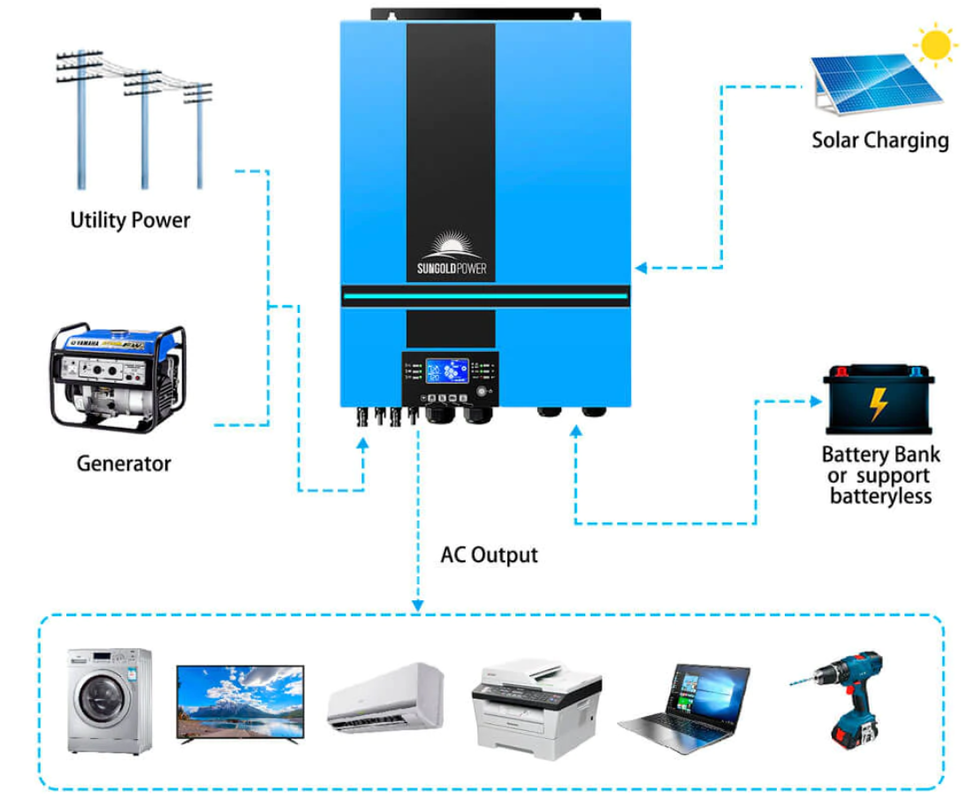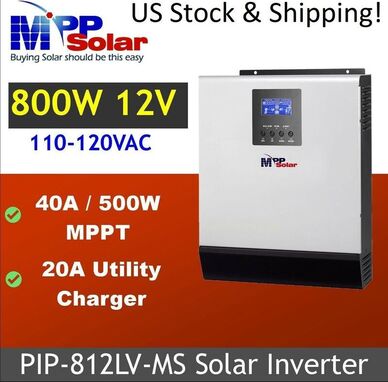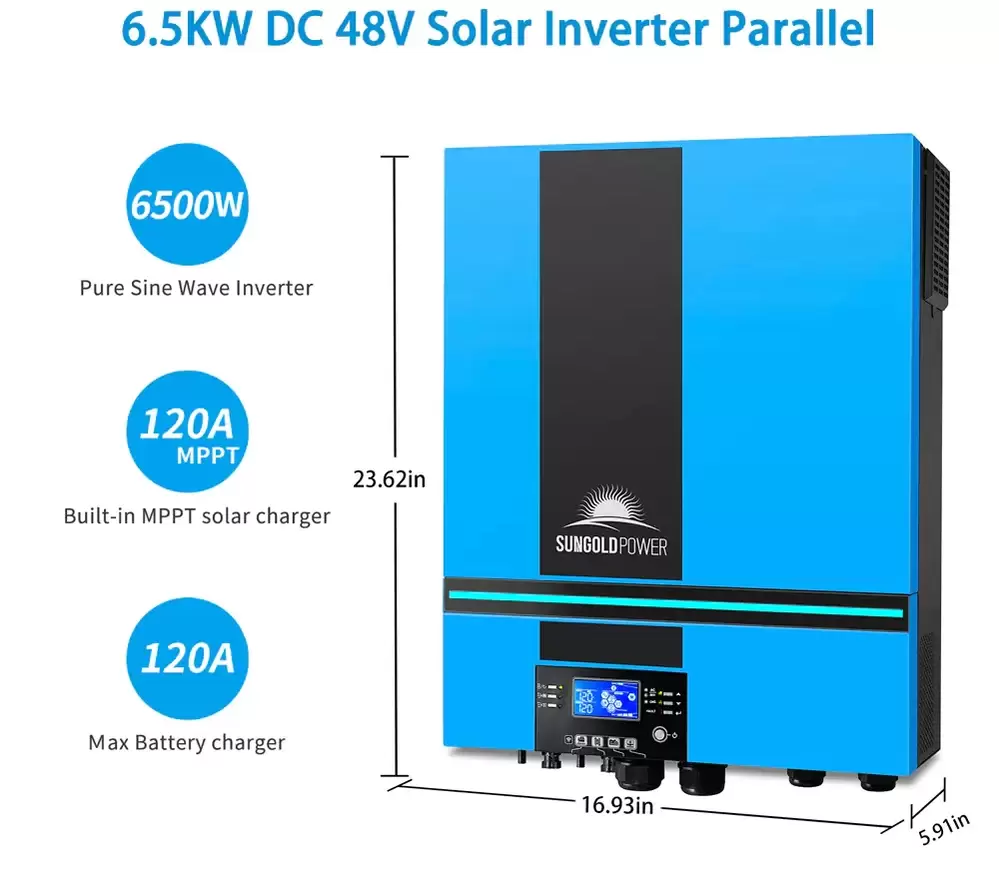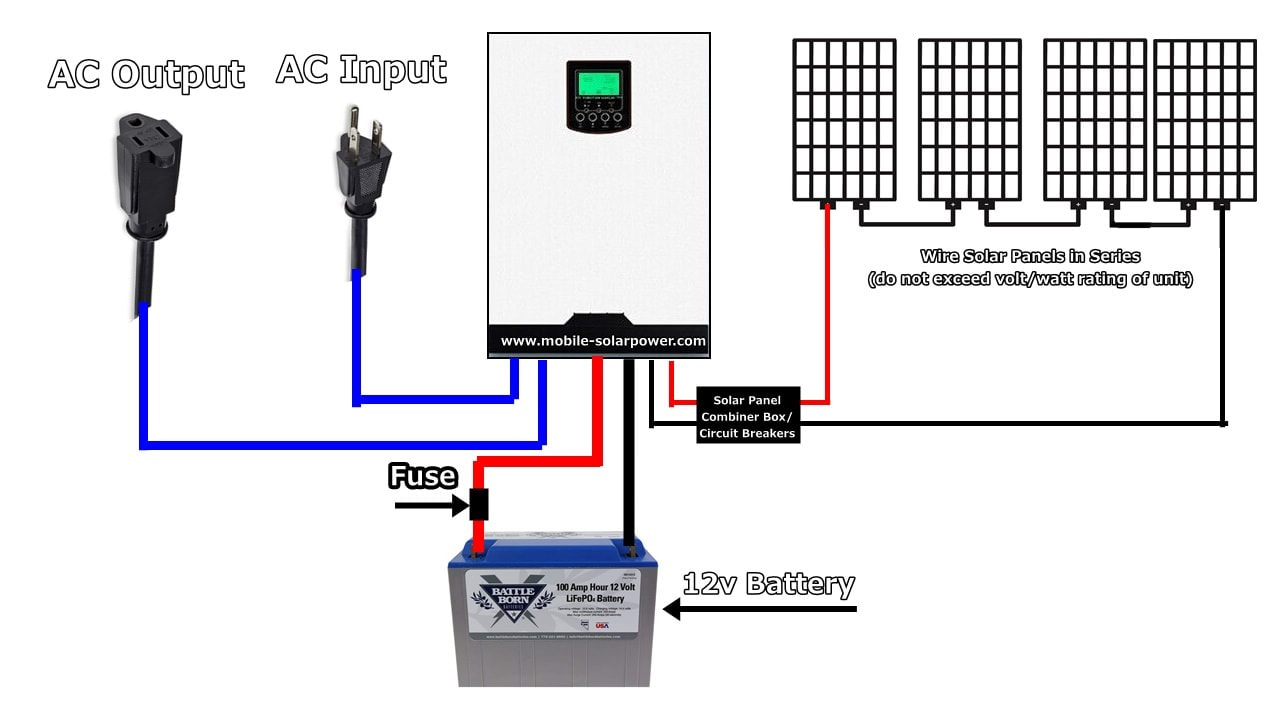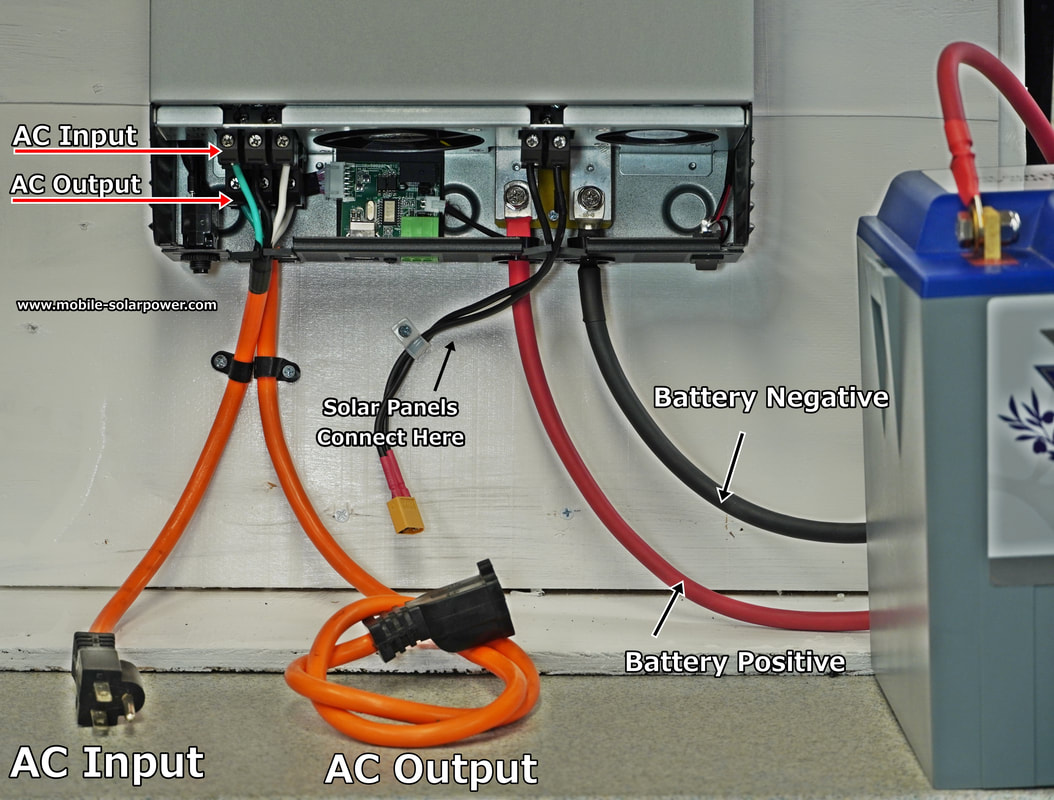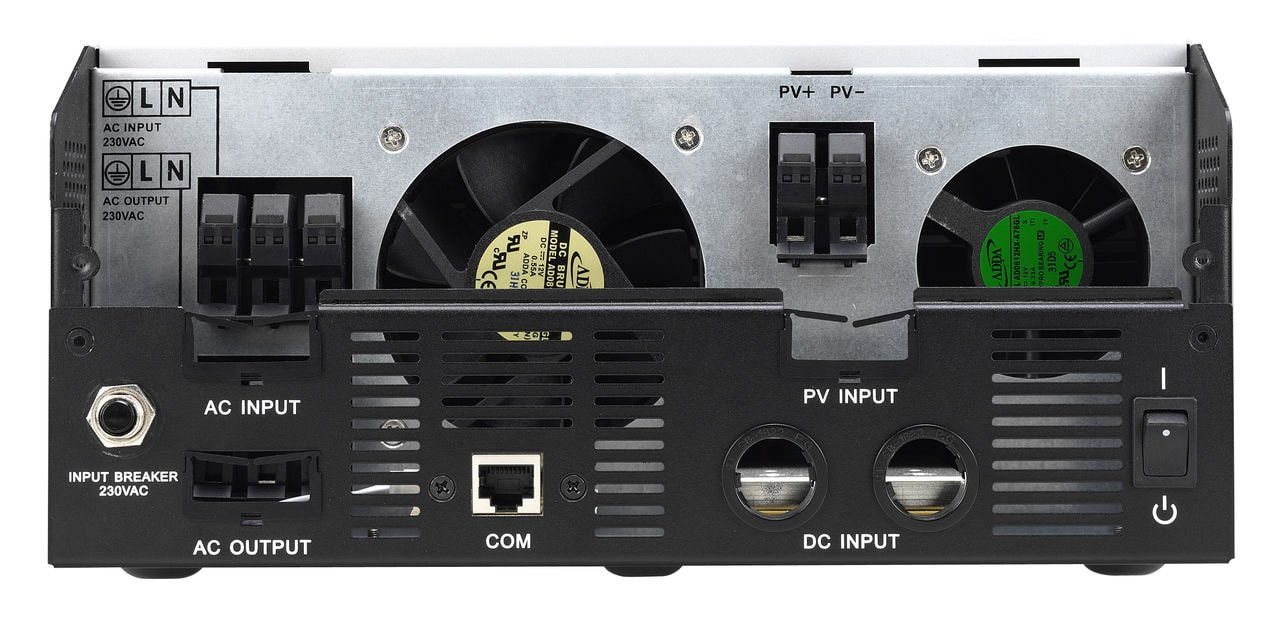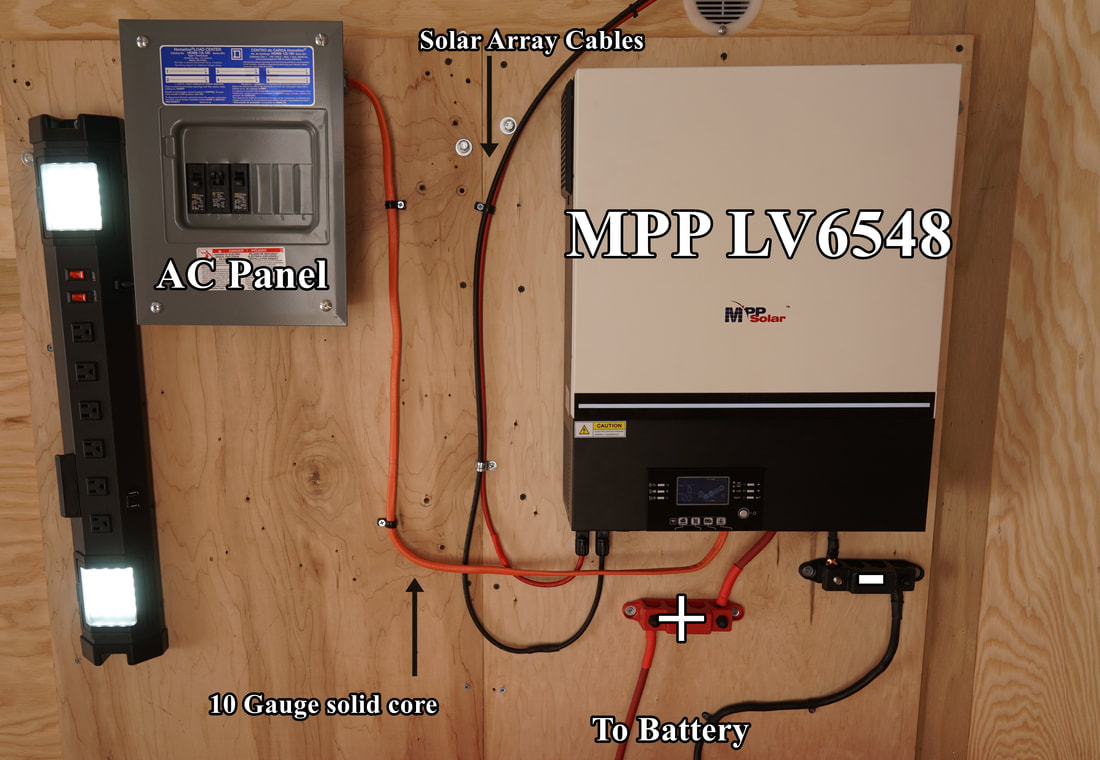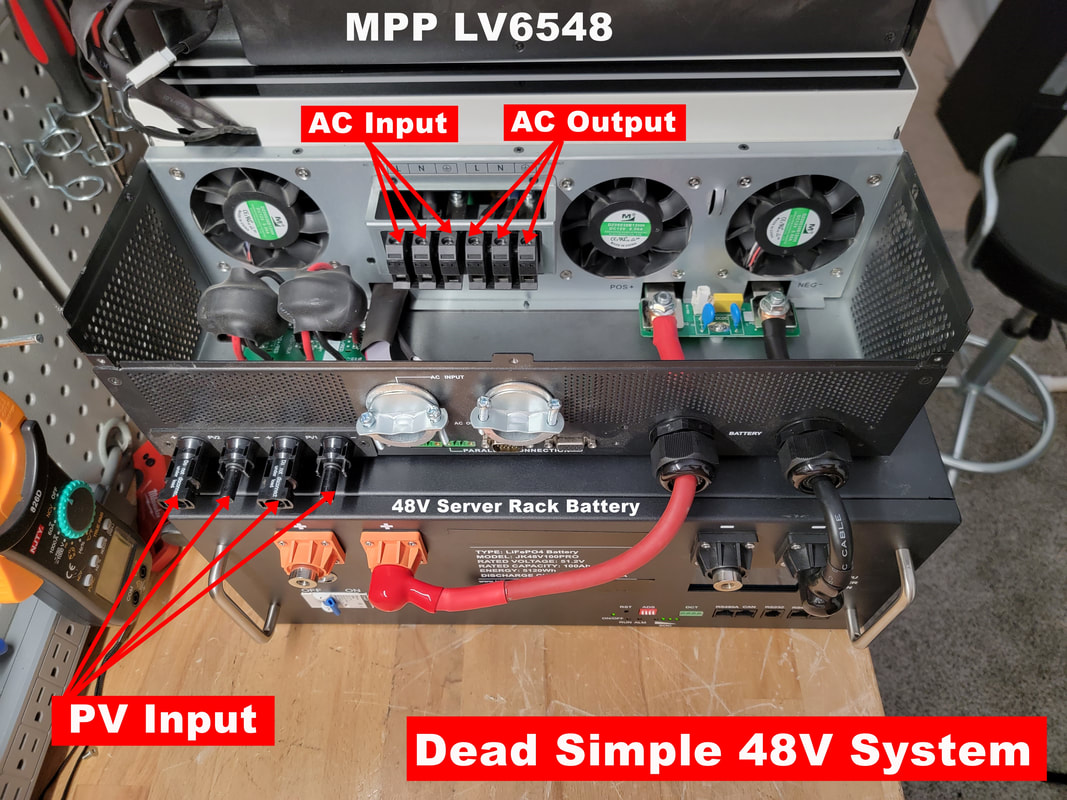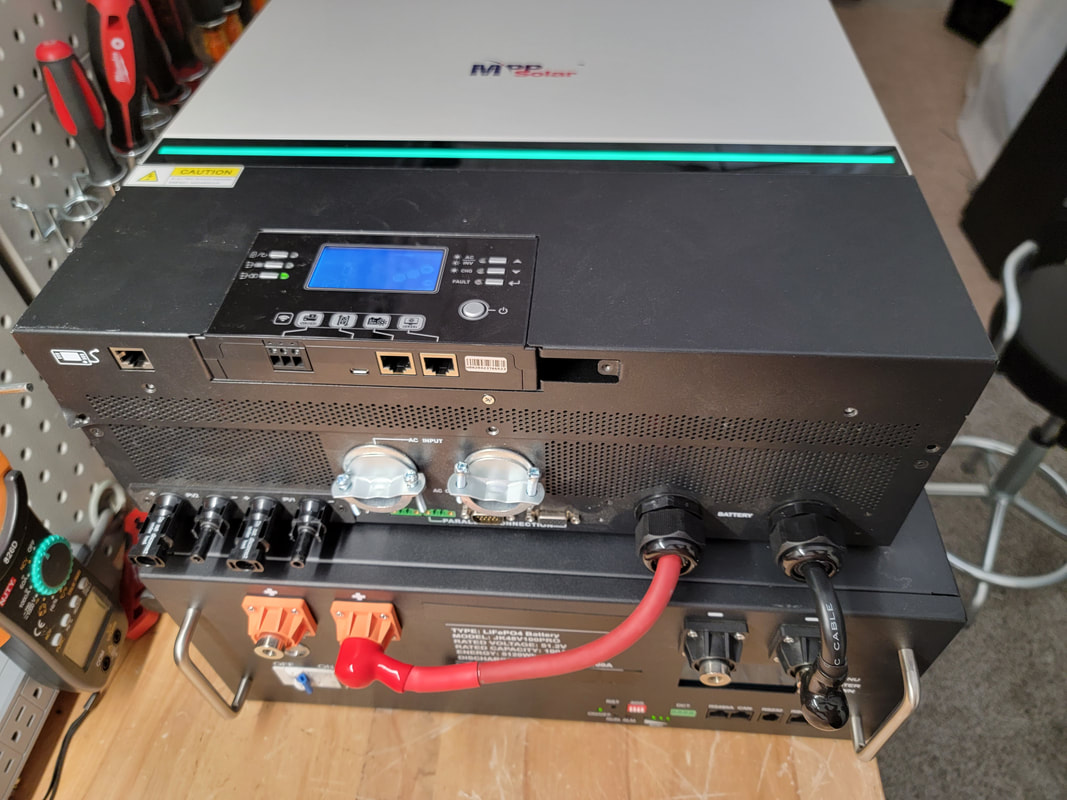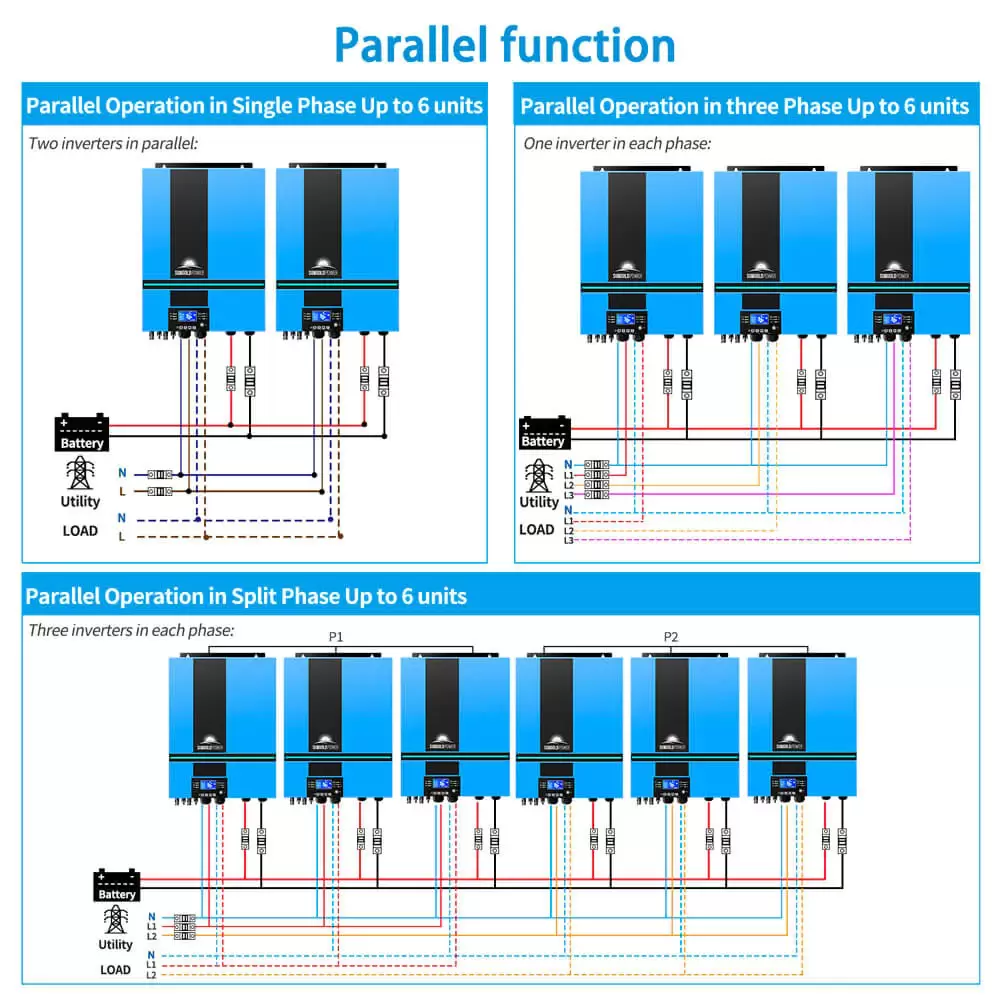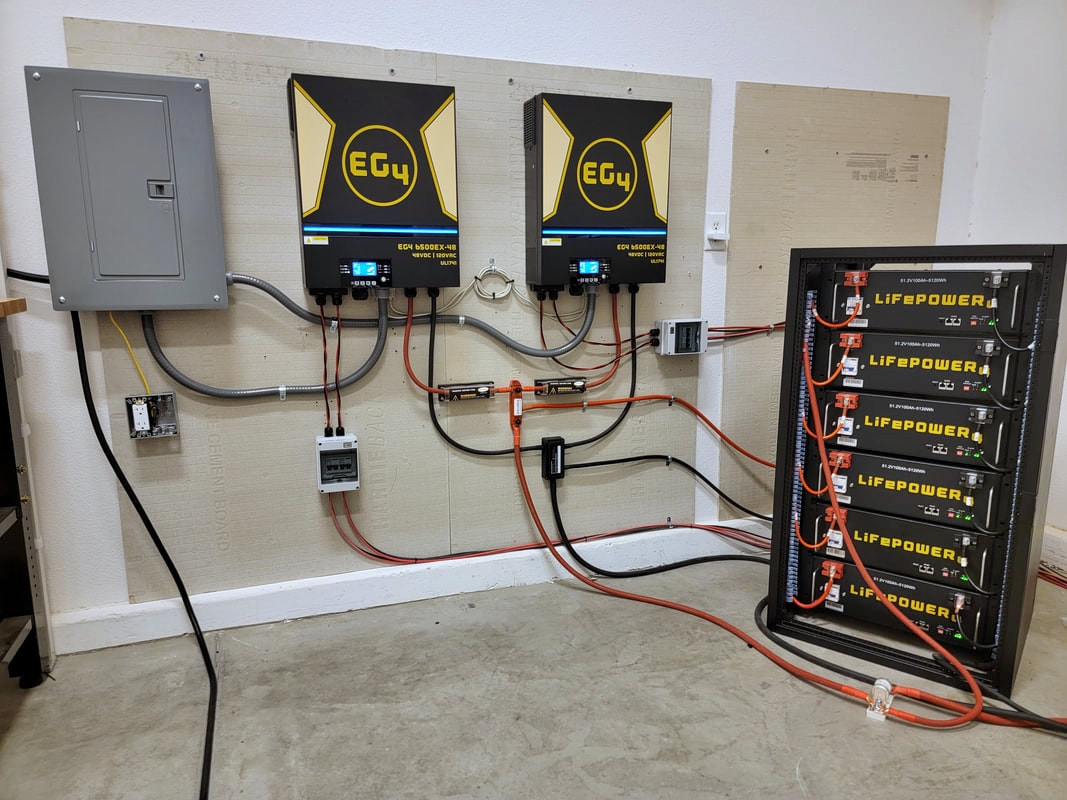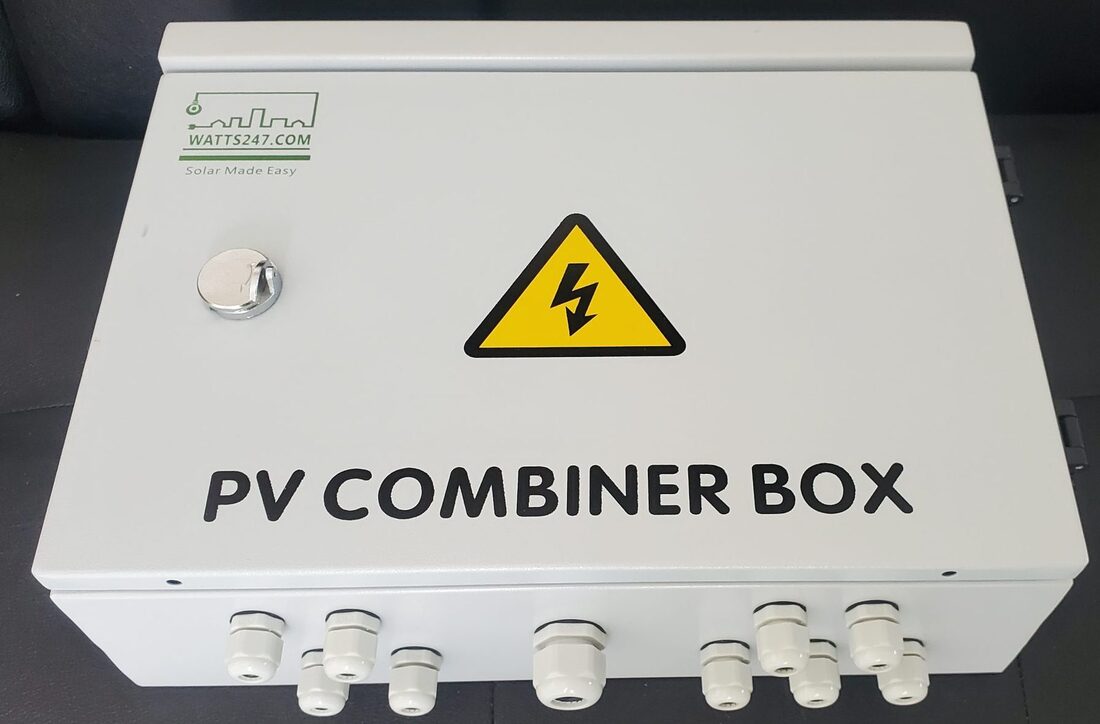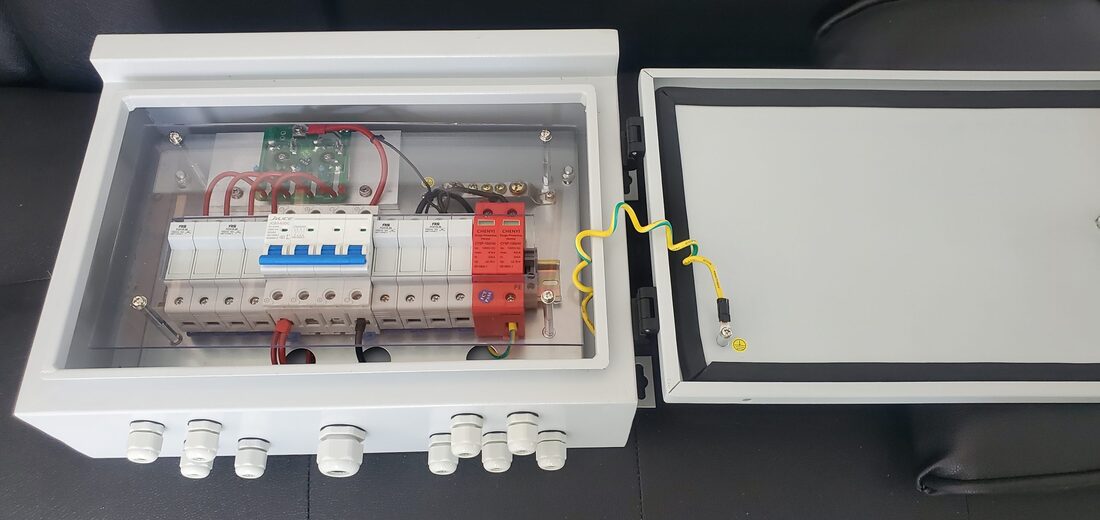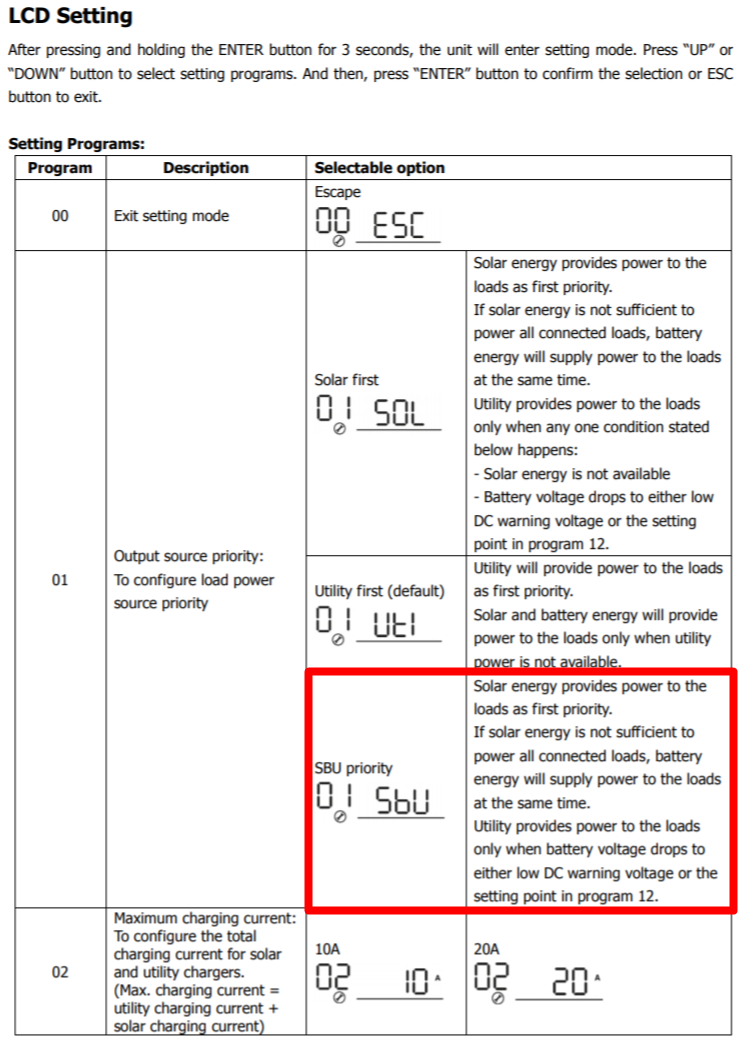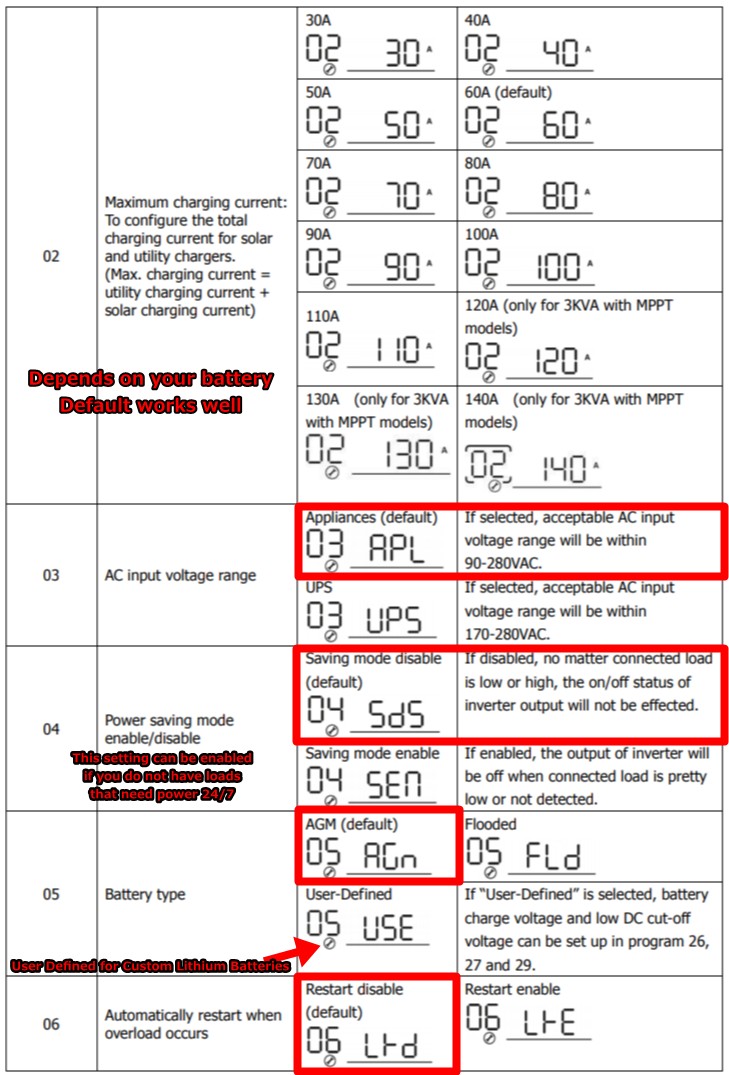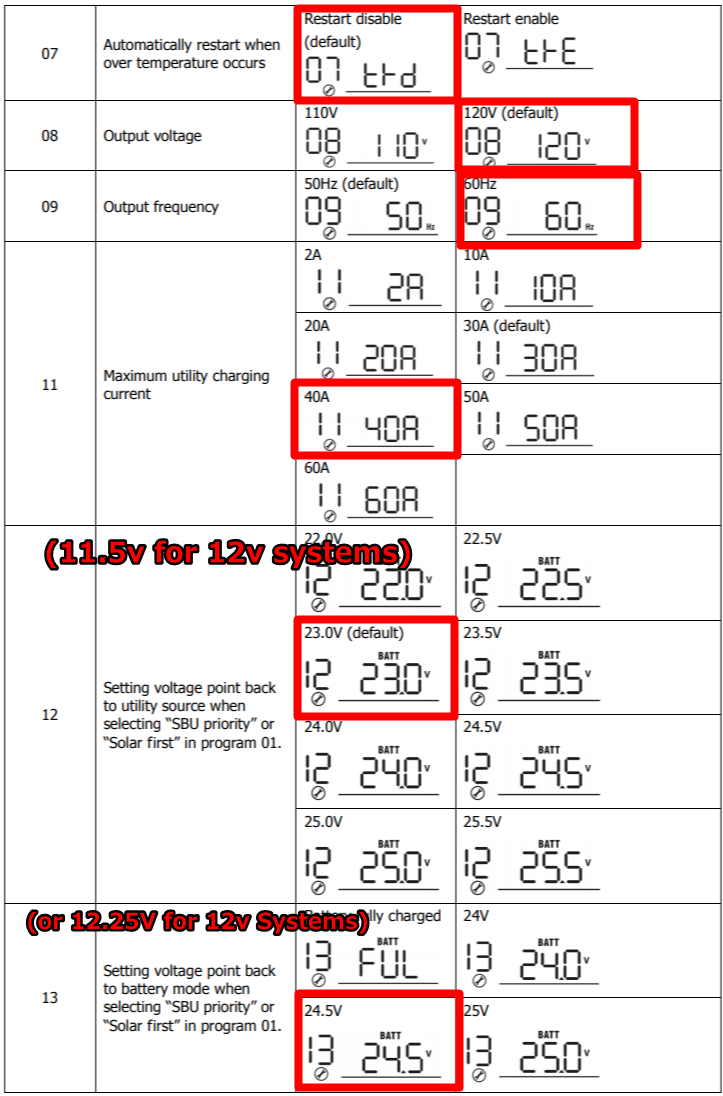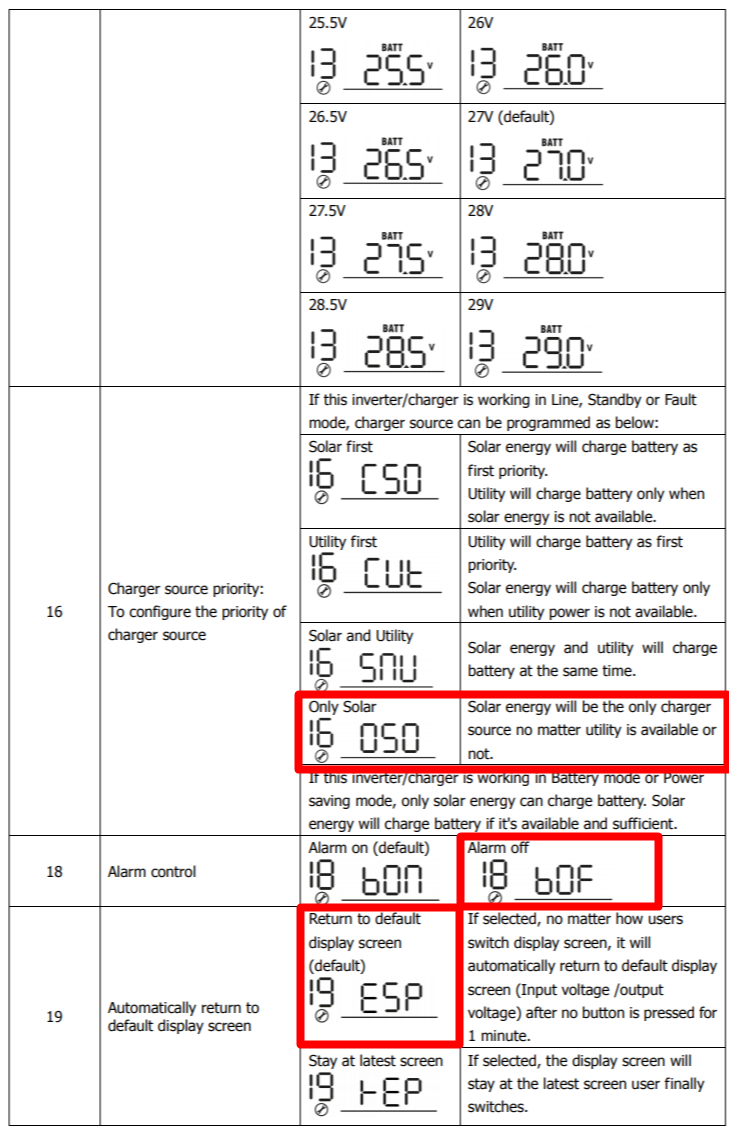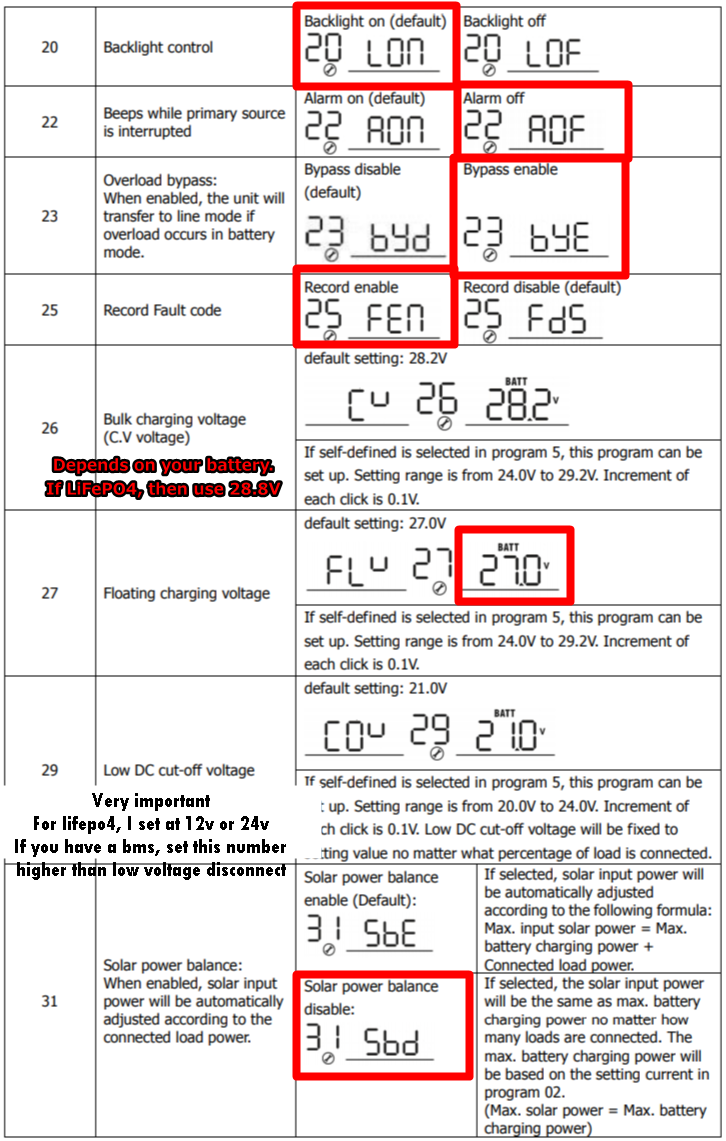All-In-One Solar Power System
-Build a full size system in minutes-
|
MPP and a few other manufacturers now sell a "complete off grid system in a box" that has:
|
That is awesome! What is the catch?
Pros:
|
Cons:
|
2 System Voltages to choose from:
Everything below is designed to work in North America, not Europe or elsewhere
(International Inverters are available through the distributors below)
Van life 12v System
|
Offgrid home/ RV/
|
The systems above are designed for offgrid use only.
If you need a permitted and code compliant 48V system, please check out what I recommend by clicking here.
If you need a permitted and code compliant 48V system, please check out what I recommend by clicking here.
Direct Download Manuals
MPP Manuals:
|
| ||||
12v System Schematic
48V All in One Schematic: Dead Simple!
My loads were pretty small for this system, so 10 gauge wire worked great. If you need a thicker gauge wire, use it! Same with the battery supply cables. Read the manual of the LV6548, and see what it recommends for the input and output terminals. Besides that, just stack the batteries up and connect them in parallel, and you are set!
All-in-one 48V Solar Genator!
This system is smaller, cheaper and more powerful than most on the market. And it takes less than an hour to build. In the pictures below, I connected a LV6548 (click here to purchase) with a single 48V server rack battery (click here to purchase).
Then add your AC loads and charging cable if you wish. Then plug the solar panels into the PV input and you are done! Dead simple and anyone can do it!
Then add your AC loads and charging cable if you wish. Then plug the solar panels into the PV input and you are done! Dead simple and anyone can do it!
If you need more power, you can put multiple all-in-one systems in parallel!
Or add as many batteries as you please:
If you want to put 2X LV6548's in parallel, check out my complete 48V system blueprint by clicking here
If your solar panel array has more than 2 parallel strings,
you need a combiner box
|
This combiner box has everything you need, circuit breakers, invidual fuses for each string, and a surge protection device.
Just hook your panels up to this box, and connect this box's output to your All-in-one solar input. Click Here for Watts247 Combiner Box Here is a video on how to use it: |
All-in-one Solar Power Box Recommended Settings:
These MPP units have a lot of settings! You can go through each setting in the manual and set it yourself, or you can follow the settings that worked well for me below. Your needs may vary, but the settings below are good for most off-grid systems. If you have grid power connected, the settings will work great!
In my opinion, the most important setting is the "low DC cut-off voltage". This is setting number 29. You want this to be higher than your batteries low voltage disconnect voltage.
Most lifepo4 bms cut off at 10.5-11 volts in a 12v System. So I will set the cut off on the inverter at 12v. This way, your bms will never disconnect power from your inverter. If you are runnig lead acid, 12v works well. Double this number for 24v systems.
Most lifepo4 bms cut off at 10.5-11 volts in a 12v System. So I will set the cut off on the inverter at 12v. This way, your bms will never disconnect power from your inverter. If you are runnig lead acid, 12v works well. Double this number for 24v systems.

